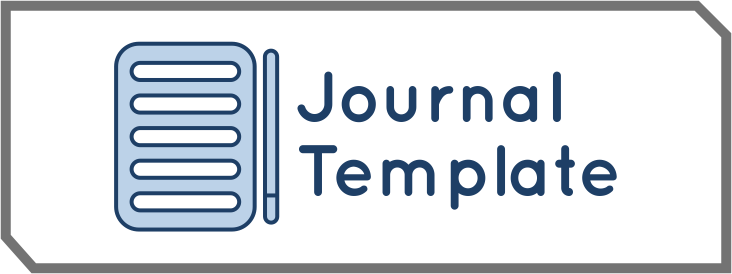The Use of Affiliate Marketing in Improving Pegipegi Sales
DOI:
https://doi.org/10.26623/themessenger.v11i2.1210Keywords:
Affiliate Marketing, Affiliate Marketers, Digital Marketing, Online Sales, Online Travel AgentAbstract
The changes in people's purchasing patterns from offline to online cause companies to change the type of their business which also affects the changing of marketing strategy. One of the marketing strategies used by the OTA (Online Travel Agent) industry is affiliate marketing. This study was conducted to find out how Pegipegi affiliate marketers used the digital marketing to help market OTA products in the digital media they use to help provide sales. The method used in this study is qualitative with the case study of Pegipegi affiliate marketers. The data collection was conducted by interviewing. The results of this study indicate that the basic understanding of how to market Pegipegi products through blogs, how to market blog through Google Ads and Facebook Ads, as well as the understanding on the functions of each affiliate marketing tools play an important role in the success of a marketer of Pegipegi affiliate.
Downloads
References
Belch, G. E., & Belch, M. (2015). Advertising and Promotion: An Integrated Marketing Communications Perspective (Global Edi). United Kingdom: McGraw-Hill Education.
Bogdan, & Taylor. (1975). Metodologi Penelitian Kualitatif. Bandung: Remadja Karya.
Denzin, N. K., & Lincoln, Y. S. (1987). Handbook of Qualitative Research. Thousand Oaks: SAGE Publications.
Fill, C. (2013). Marketing Communications: brands, experiences and participation (6th ed.). United Kingdom: Pearson.
Institute, N. T. L. (2016). Millionaire Mindset. € Morrisville, North Carolina: Lulu Press, Inc.
Kaufman, I., & Horton, C. (2015). Digital Marketing: Integrating Strategy and Tactics with Values: A Guidebook for Executives, Managers, & Students. United Kingdom: Routledge.
Kingsnorth, S. (2016). Digital Marketing Strategy: An Integrated Approach to Online Marketing (1st ed.). USA: Kogan Page.
Kotler, P. (2001). Kotler on Marketing: How to Create, Win and Dominate Markets. United Kingdom: Simon & Schuster UK Ltd.
McPheat, S. (2011). Eselling: The Alternative Way to Prospect and Sell for Sales Professionals: How to Use the Internet for Prospecting, Personal Branding, Networking and for Engaging the C-Suite Decision Maker. United Kingdom: Troubador Publishing Ltd.
Nursastri, S. A. (2016). Saatnya Travel Agent Konvensional Merambah Dunia Digital.
Prabhu, S., & Satpathy, T. (2015). Affiliate Marketing s Future in India. Indian Journal of Science and Technology, 8(S4), 278 282.
Putri, D. W., & Maulida. (2017). Analisis Strategi Perencanaan Pesan Pada Akun Instagram E-Commerce @thekufed. Jurnal The Messenger, 9(1), 70 78.
Ryan, D., & Jones, C. (2009). Understanding Digital Marketing: Marketing Strategies for Engaging the Digital Generation. London: Kogan Page.
Sanjaya, R., & Tarigan, J. (2009). Creative Digital Marketing. Jakarta: PT Elex Media Komputindo.
Setiawan, B. (2016). Target Wisatawan Mancanegara dalam Dua Tahun Jokowi-JK.
Downloads
Additional Files
Published
Issue
Section
License
Copyright Transfer Form
The copyright to this article is transferred to the Department of Communication, Faculty of Information Technology and Communication, Universitas Semarang if and when the article is accepted for publication. The undersigned hereby transfers any and all rights in and to the paper including without limitation all copyrights to the Department of Communication, Faculty of Information Technology and Communication, Universitas Semarang. The undersigned hereby represents and warrants that the paper is original and that he/she is the author of the paper, except for material that is clearly identified as to its original source, with permission notices from the copyright owners where required. The undersigned represents that he/she has the power and authority to make and execute this assignment.
We declare that:
1. This paper has not been published in the same form elsewhere.
2. It will not be submitted anywhere else for publication prior to acceptance/rejection by this Journal.
3. A copyright permission is obtained for materials published elsewhere and which require this permission for reproduction.
Furthermore, I/We hereby transfer the unlimited rights of publication of the above mentioned paper in whole to the Department of Communication, Faculty of Information Technology and Communication, Universitas Semarang. The copyright transfer not covers the exclusive right to reproduce and distribute the article, including reprints, translations, photographic reproductions, microform, electronic form (offline, online) or any other reproductions of similar nature.
The corresponding author signs for and accepts responsibility for releasing this material on behalf of any and all co-authors. This agreement is to be signed by at least one of the authors who have obtained the assent of the co-author(s) where applicable. After submission of this agreement signed by the corresponding author, changes of authorship or in the order of the authors listed will not be accepted.
Retained Rights/Terms and Conditions
1. Authors retain all proprietary rights in any process, procedure, or article of manufacture described in the Work.
2. Authors may reproduce or authorize others to reproduce the work or derivative works for the authors personal use or for company use, provided that the source and the Department of Communication, Faculty of Information Technology and Communication, Universitas Semarang copyright notice are indicated, the copies are not used in any way that implies the Department of Communication, Faculty of Information Technology and Communication, Universitas Semarang endorsement of a product or service of any employer, and the copies themselves are not offered for sale.
3. Although authors are permitted to re-use all or portions of the Work in other works, this does not include granting third-party requests for reprinting, republishing, or other types of re-use.




